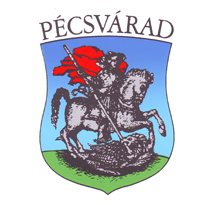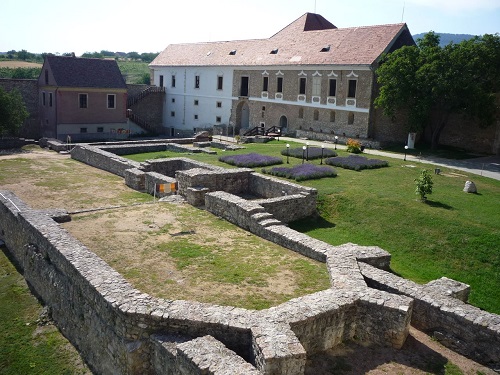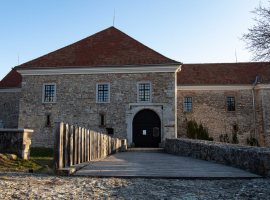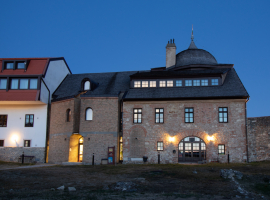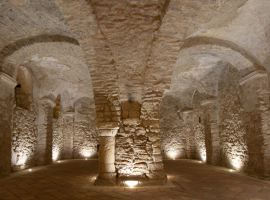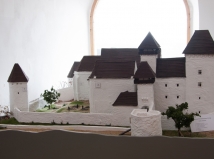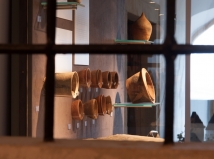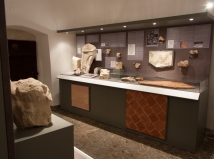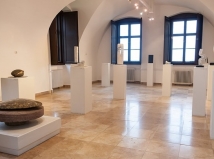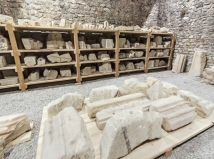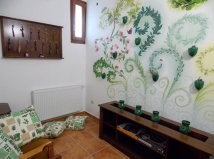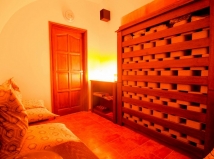History of the Castle
Although the castle is also known as the “Pécsvárad Fortress”, this name may be misleading since the building complex has never actually been a fortress in the military sense. It did have walls and fortifications but these served the protection of those living inside against attacks by marauders. During the existence of the fortress it faced no serious military attacks which these structures would not have withstood anyway.
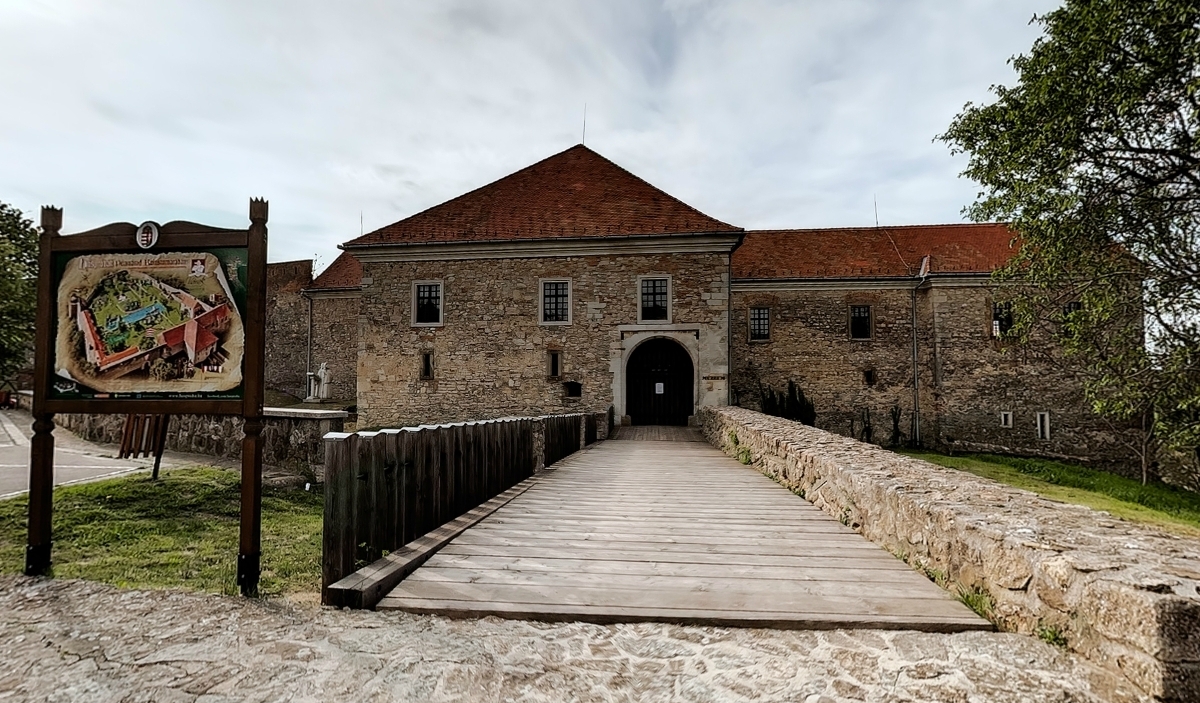 The building is a fortified monastery founded back in 988 A.D. by King Saint Stephen, having defeated Koppány. The stone building, a regal court of Prince Géza already standing there, was donated by Stephen to the high priest Astrik, so that he can use it for establishing homes for Benedictine monks.
The building is a fortified monastery founded back in 988 A.D. by King Saint Stephen, having defeated Koppány. The stone building, a regal court of Prince Géza already standing there, was donated by Stephen to the high priest Astrik, so that he can use it for establishing homes for Benedictine monks.
The Pécsvárad Monastery was the second one in Hungary among those founded by the Benedictine order, the first one having been established in Pannonhalma by Prince Géza in 996. Founding a monastery here in the southern pocket of the country possibly had two major objectives, firstly to spread Christianity and convert the pagan population of the surrounding areas by the monks. Secondly, we must remember that Benedictines are a working order – well reflected by their familiar slogan “Ora et labora”, usually translated as “Pray and work”. In the lands of western-European Benedictines, monks had developed agricultural production that was quite modern relative to their time. The thought that this should be imported to Hungary was probably among the reasons why both Géza and Stephen invited the Benedictines to Hungary.
The Pécsvárad monastery was richly provisioned by the king. According to the letter dated in 1015 and now preserved in the Vatican, the lands belonging to the abbey included 41 villages, and their population numbered 1136. The document has a detailed list of all the craftsmen serving the monastery, as well as an inventory of other donations (e.g. grails, etc.), and even specified the types of punishment that had to be applied for disturbing the monastery.
The monastery has been expanded and improved since the beginnings. Following a fire in 1157, a new level was built upon the original building, an entrance was created on the northern façade with a bastion a segment of which is still visible in front of the entrance with a pit and a drawbridge. Later, in the 13th century a large Gothic church was built, and to its southern side the monastery rectangle was added in the 14th century, including the traditional Benedictine rectangular courtyard with the corridor running around it and the various rooms opening from there such as the chapter room, the dining hall, etc. – as it is still visible today in more fortunate places such as Pannonhalma. A tower with rooms to live in was attached to the western end of the original building, and the complex was surrounded by a wall that was divided into sections by bastions.
Just like at the time of founding by King Stephen, the monastery was highly ranked during the time of Árpád-house kings. Saint Stephen as well as most of the kings who followed him surely turned up in the monastery, most of them even enriching it with some sort of donation. Saint Gellert visited here too, who was convinced by the Pécsvárad abbot and the Bishop of Pécs to work towards converting the Hungarians rather than paying a pilgrimage to the land of Israel. Somewhat later, Béla (the blinded son of Prince Álmos fighting in vain for the throne) lived between these walls for a longer period (1125-1128). When he became King Béla II (1131-1141), he expressed his gratefulness by giving donations to the monastery.
As an abbey, the Pécsvárad monastery was a highly significant place from the age of Saint Stephen to the Ottoman era. After the period of Religious Conversion, it was operated as an authority office of the time (1254-1526), meaning that legal actions, estate purchase agreements were documented here. Today this kind of activity is performed by notaries. The status of an authority office was granted only to such places that were trusted by both the official parties and the private clients. The position of the Abbot of Pécsvárad was a highly ranked public dignity. Several of the abbots were given assignments from the Pope.
The life of the monastery ended with the Ottoman conquest. After the Battle of Mohács (1526) the monks fled from the monastery in 1539. The abandoned building complex, although it had fortified walls, was declared by the military leadership as indefensible against the Ottoman military power, therefore the soldiers damaged the buildings and walls – thus preventing the Turks from later using them –, and withdrew. It was only four years later, in 1543, that the Turks occupied Pécsvárad. They did not care much about the destroyed monastery: neither did they restore it nor did they build anything inside it. The condition of the ruined buildings kept on deteriorating during the long period of Ottoman occupation.
After the Turks have left in 1686, the Benedictines did not return to their monastery in Pécsvárad. In the early 18th century, Germans were settled in the abandoned properties of the abbey. The outside walls of the monastery were built up, and two single-level buildings were erected in the north-eastern corner, to house the administration of the estates. This was the time when the big gate was created which now serves as the main entrance to the hotel (showing the date of 1729). What remained more or less intact were the 10-11th century chapel, the ground level of the palace (the upper level was reconstructed), and the south-eastern bastion. The remaining buildings were not restored, but were demolished and their stone material used at other construction sites. The area embraced by the wall was utilised as a barnyard.
Although no such thing as an abbey existed any longer, the “Abbot of Pécsvárad” title was regularly granted, together with the incomes of the estates. The last such “titular” abbot was the Mainz Archbishop's procurator Hugo Franz Karl von Eltz-Kempenich (1739-1779). The parish church above the castle was built by him, financed mostly from estate revenues. When he finally died, Maria Theresa decided that the properties of what used to be the Abbey are too valuable for its revenues just to seep away in an uncontrolled way, and she created a Public Foundation Manor that had the task of supporting the Science University of Buda. The headquarters of the Foundation were set up in the castle.
In 1945 the Public Foundation centre, i.e. the castle building became headquarters of the state forestry company which stayed in there until 1969.
Archaeological research was launched in the monastery area in 1957 and lasted until 1987. The main walls of buildings that collapsed during the Ottoman era were explored and made visible, the 10th century building and the chapel inside it were restored, the lapidary was established, and the remaining parts of the monastery were made accessible for the public. The restaurant was created around the late 1980s where the offices had existed, and the hotel was housed under the high roof just above. In that form, the building was inaugurated on a public celebration in 1988. By this investment the final structure was created which has remained practically unchanged – only the conditions of the building deteriorating gradually – until the recent renovations.
(Based on a text by dr. Iván Novotny )
Associated gallery
Map
7720 Pécsvárad, Vár u. 45.
Phone: +36 72 671 235
Mobile: +36 30 387 8435
E-mail: info@pecsvaradivar.hu
Guestbook
Next